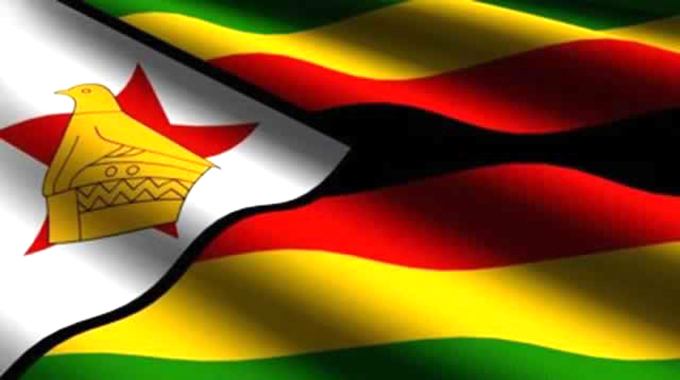President to commission Hwange Units 7, 8

Wallace Ruzvidzo-Herald Reporter
President Mnangagwa is on Thursday expected to formally commission the Hwange Thermal Power Station expansion of Units 7 and 8, as the Second Republic continues to make good its promises to address the country’s power challenges, permanently.
The President officiated at the ground-breaking ceremony for the expansion of Hwange Power Station on June 28, 2018, and despite the Covid-19 outbreak which affected progress, the project is now complete, with Unit 7 passing all tests last week and Unit 8 supplying the grid consistently but still to undergo final tests.
The two units have a capacity of 600MW, and the completion of the expansion process has significantly reduced load shedding across the country. Yesterday, Energy and Power Development Minister Zhemu Soda said the consistent power supply being experienced countrywide, was not a political gimmick, as electricity supply will only increase going forward.
Unit 7 was successfully synchronised on March 20, and was put back on the national grid last month, adding 300MW to national output as the country continues to make concerted efforts to completely eradicate load shedding. Unit 8 is already supplying the grid and is now undergoing routine tests.
In recent months, Zimbabwe has been enjoying increased power generation and consequently supply, following the successful synchronisation and uncut output of Unit 7.
Zimbabwe and the United Kingdom yesterday signed a Memorandum of Understanding (MoU) in renewable energy that is set to contribute to Harare’s power generation and renewable energy targets, as relations between Harare and London continue to improve since 2018.
Speaking after the signing ceremony, Minister Soda said: “It is true that the Hwange expansion project will be commissioned by His Excellency on Thursday and it is an exciting moment where we will have the 600MW being officially announced to be fed into the national grid.
“As we speak, the two units are running and this is what has improved our power generation capacity, I think you have noticed the improvement in power generation capacity where there is no load shedding in most instances.
“Probably you might have come across some prophets of doom who were saying that after August there is going to be massive load shedding that is not true, and we are not part of that,” he said. “One thing that we know is that there have been some revisions in the water allocation and whatever Zesa is using for the purposes of generating electricity from the Kariba dam is within what we have planned and projected. We do not subscribe to the article that said after August there will be load shedding that is not correct.”
While there has been a reduction of water supplies for both Kariba power stations, Zesa can use Kariba South at full output during peak demand, but cutting back sharply at some of the other times, with Hwange Thermal now with the extra 600MW able to carry the bulk of the load at those times.
Minister Soda said following the successful completion of Unit 7 into the national grid, Unit 8 was going through final tests and would be up soon.
“Unit 7 has successfully completed its tests and is now commercially available for operation and Unit 8 is also undergoing similar tests and it will be giving 300MW once the tests are finalised. There is no way that we are going back to the past where we used to experience long hours of load shedding,” he said.
Turning to the MoU with the UK, Minister Soda said it would focus mainly on renewable energy as Zimbabwe was already endowed with the natural assets. Zimbabwe is targeting to generate 2 100MW from renewable energy by 2030 with 1 100MW by 2025.
“We signed an MoU with the United Kingdom. The purpose of the MoU is to deepen our collaboration, which is in existence and this time collaborating in the area of energy particularly renewable energy.
“We have a mandate to supply electricity to the nation and our focus is to spread our energy mix by including renewable energy, which we have in abundance, especially in the way of solar which is a natural asset. We also have potential to generate from wind and hydro as resources that we have. The growth that we have should be sustained,” he said.
Collaboration between Zimbabwe and Britain, said Minister Soda, would go a long way in assisting Zimbabwe achieve its renewable energy goals.
“The purpose of this MoU is to collaborate especially in the area of our renewables where we are going to share our expertise with the British government and on their part, they are going to bring in the private sector to participate in the development of projects in Zimbabwe, focusing on renewables and they are very much welcome to work with the Government of Zimbabwe. We shall see teams comprising representatives from the British and Zimbabwe governments together with the private sector being constituted.
“We have targets for NDS1 and NDS2, they are going to be a partner. We are envisaging a generation of 2 100MW of our energy to come from renewables by 2030, with up to 2025 our target is 1 100MW. This MoU is a way by which these targets will be realised, collaborating with other jurisdictions.
“From this relationship, we expect that any time from now, we shall see teams being constituted and once the teams are in place, they will start the exchange visits and implement the terms of reference of the MoU,” he said.










Comments